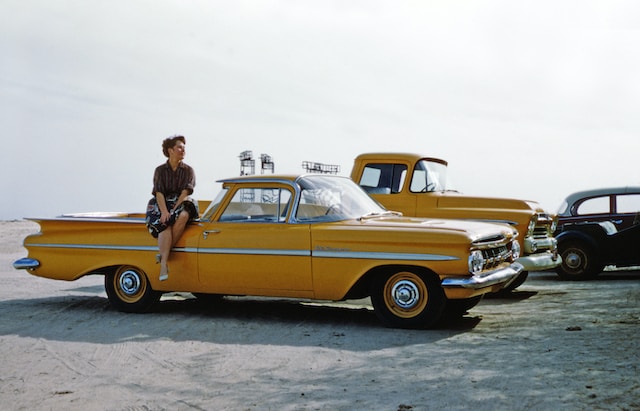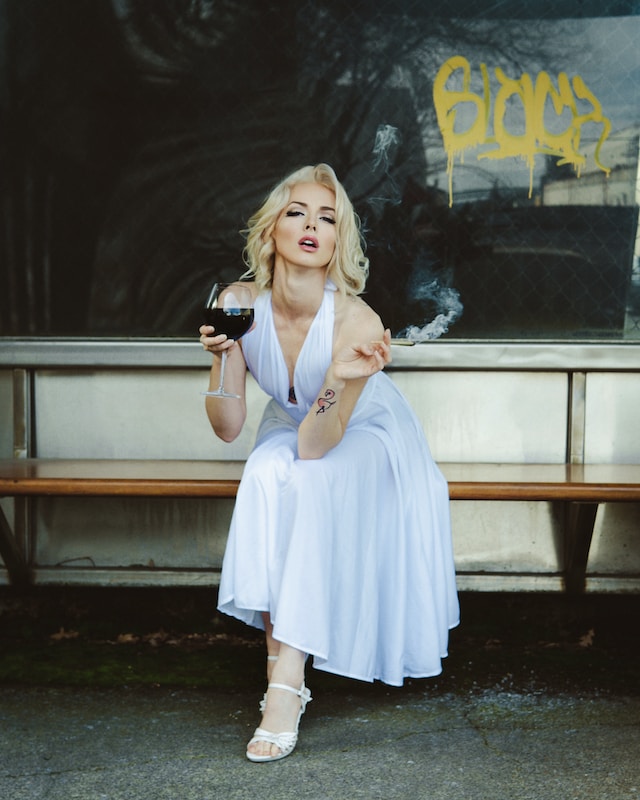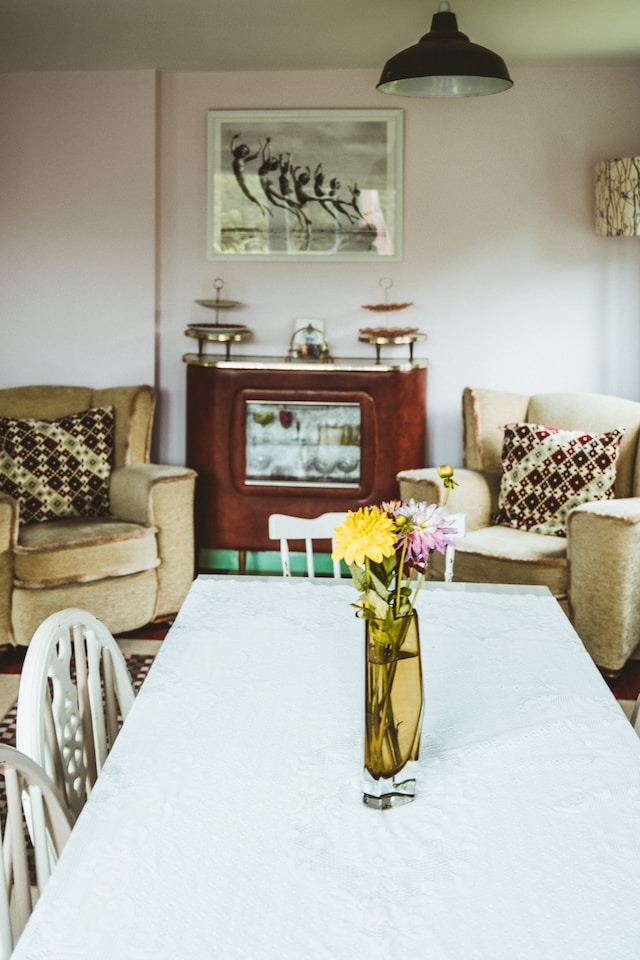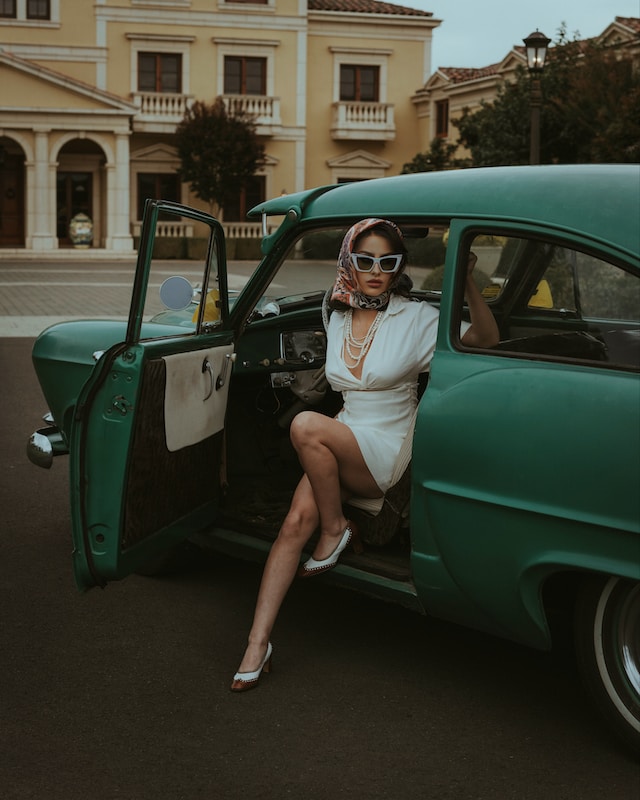
As the post-war era settled into the 1950s, a new wave of glamour and elegance swept the world. It was a time of renewal and resurgence after the war-torn world that preceded it. Women’s fashion in the 1950s style embraced the hourglass silhouette, highlighting curves with cinched waists and full skirts. Men’s fashion typically consists of tailored suits and slicked-back hair, exuding confidence and sophistication. The fashion industry was fast changing.
The lifestyle of the era was marked by opulent home decor, formal dinner parties, and cocktail soirées. The decade became a golden era of style, thanks to Hollywood’s impact. Tinseltown’s most iconic stars became the biggest influencers of the time, embodying timeless glamour and sophistication. Today, the 1950s style continues to inspire a retro-inspired fashion trend, mid-century modern design, and sophisticated lifestyle choices.
Hollywood influences
The Hollywood stars of the time were some of the biggest influencers of fashion trends. The likes of Grace Kelly, Audrey Hepburn, and Marilyn Monroe became icons of style.
Gamine and boyish: Audrey Hepburn
Audrey Hepburn, on the other hand, was known for her gamine, boyish figure and her love of streamlined and slender silhouettes. Her style was often characterized by classic black dresses, cropped pants, and simple blouses. Her signature hairstyle, the pixie cut, also became a popular trend, with women around the world copying her iconic look. Hepburn was a trailblazer when it came to style, showcasing effortless, chic simplicity that continues to inspire women today.
Sultry and curvy: Marilyn Monroe
Marilyn Monroe, with her famous curves and sultry style, had a lasting impact on fashion as well. She often wore flattering dresses that highlighted her hourglass figure. Monroe also made the cinched waist and full skirt combination a staple of women’s fashion. She was known to accessorize with statement pieces such as oversized sunglasses and luxurious furs. Her iconic look continues to inspire retro-inspired fashion collections to this day.

Understated and clean: Grace Kelly
Grace Kelly was known for her clean and understated style, epitomizing the refined glamour of the 1950s. She often wore sleek and simple silhouettes, with her signature style being the fitted bodice and full skirt combination. She was also known for her love of satin and silk fabrics, which further accentuated her timeless elegance. Kelly continued to be a fashion inspiration even after she left Hollywood to become Princess Grace of Monaco. Over the years, her name became synonymous with refined and regal style.
Together, they epitomized the glamour and elegance of the 1950s style. They embodied the sophisticated, refined elegance of the era, each with their own unique spin on the iconic look. Their influence on fashion and style is far-reaching. Today, people around the world continue to look to them for inspiration and timeless elegance.
Opulent decors
But fashion wasn’t the only aspect of life that saw a shift towards glamour and elegance. In contrast to the utilitarianism and austerity of the war years, the 1950s saw a resurgence of opulence and luxury in interior design.
Homeowners around the world began to embrace elegant decor that featured ornate furnishings, plush carpets, and gilded accents. The use of luxurious materials like velvet, silk, and brocade became commonplace, lending homes an air of refinement and sophistication.
Elaborate and stylized furniture pieces

Furniture design also saw a shift towards more elaborate and stylized pieces. The angular lines and simple forms of the Bauhaus movement gave way to curvaceous and ornate designs that embodied the glamour of the era. Mid-century modern designers like Charles and Ray Eames, George Nelson, and Eero Saarinen produced iconic pieces that continue to be celebrated to this day.
Lighting also played a significant role in creating the glamorous ambiance of the 1950s home.
Chandeliers, floor lamps, and table lamps made from sparkling crystal, gleaming brass, and shimmering glass became fixtures in the most stylish homes. These statement pieces provided both light and design inspiration, adding an extra layer of glamour to any room.
Rich color palettes
Color palettes of the era tended towards rich, deep shades like emerald green, sapphire blue, and ruby red. These bold colors were often paired with metallic accents of gold, copper, or bronze, adding a sense of luxury and warmth to the decor. Wallpaper patterns were also popular during this era, with designs featuring bold graphic prints, florals, or damask repeating patterns.
The opulent furnishings, rich materials, and luxurious accents created an ambiance of glamour, transporting homeowners to a bygone era of refinement and luxury. Today, mid-century modern design continues to inspire. Many modern individuals and decorators continue to incorporate elements of the 1950s glamor and elegance into their homes.
World-wide influence
The allure of the 1950s style has continued to inspire fashion and design to this day. From retro-inspired dresses to mid-century modern home decor, the glamour and elegance of the post-war era continue to captivate us with its timeless appeal.
This is a fashion that quickly spread across and started to take over the world. Even in Japan, the fashions started to shift.
Japanese women, who had previously worn traditional kimonos, began to embrace the Western styles of the 1950s. They took cues from American and European women’s fashions, adopting full skirts, fitted blouses, and kitten heels. The 1950s also saw a rise in Japanese designers creating their own unique takes on this new Western-inspired style. The iconic Japanese brand, Comme des Garçons, was founded during this era and continues to lead the avant-garde fashion scene today.
Interesting facts about the 1950s style
1. The popularity of the hourglass silhouette in women’s fashion was largely due to the controversial “New Look” introduced by designer Christian Dior in 1947.
2. Men’s fashion in the 1950s was heavily influenced by the silver screen, with actors like Cary Grant and James Dean setting the trends for tailored suits and leather jackets.

3. The famous Ray-Ban Wayfarer sunglasses were first introduced in 1952 and quickly became a must-have accessory for both men and women.
4. The use of synthetic fabrics like nylon and polyester became widespread in the 1950s, leading to a boom in affordable mass-produced clothing.
5. The 1950s saw a rise in home ownership and suburban living, leading to a demand for stylish and modern home decor. Furniture designers like Charles and Ray Eames became household names during this era.
6. Popular hairstyles for women in the 1950s included the beehive, the pixie cut, and the French twist.
7. The post-war years also saw a rise in consumer culture, with advertising and marketing becoming more prevalent than ever.
8. The iconic Barbie doll was introduced in 1959 and quickly became a cultural phenomenon, influencing generations of young girls’ fashion and beauty standards.
9. The 1950s saw the invention of many modern conveniences like the automatic dishwasher and the television, transforming how people lived and entertained at home.
10. The Cold War between the United States and the Soviet Union also had an impact on fashion, with the space race leading to a fascination with futuristic designs and materials such as metallic fabrics and vinyl.
A decade that looks to the future
As the world recovered from the war and people were eager for a return to normalcy, the 1950s style represented a sense of stability and optimism for the future. It was a time of hope, with the glamour and elegance of the era reflecting a desire for refinement and sophistication. Today, the 1950s style is still revered for its timeless appeal and its ability to capture a bygone era of optimism and elegance. Whether it’s fashion, home decor, or entertainment, the style of the 1950s continues to inspire and captivate us with its enduring charm.
